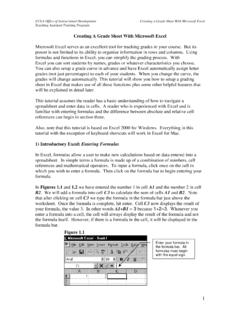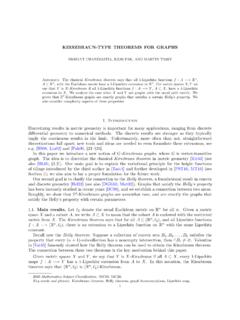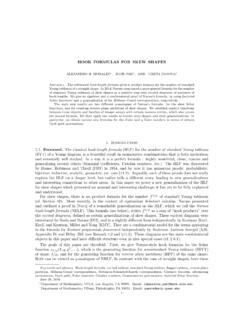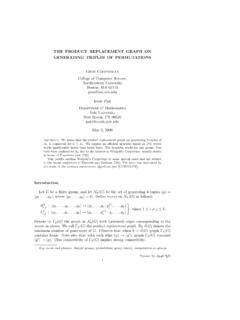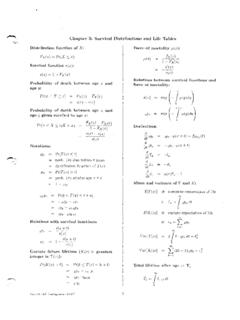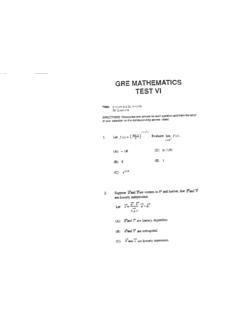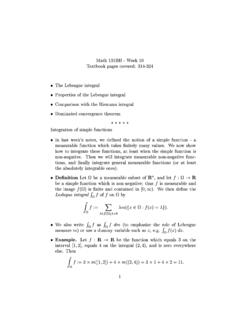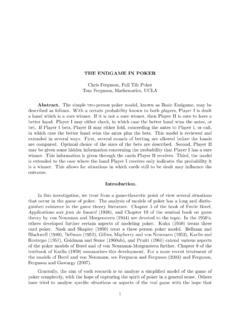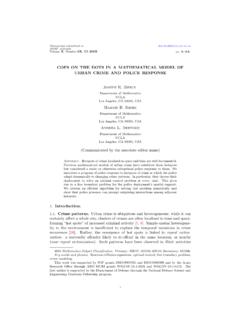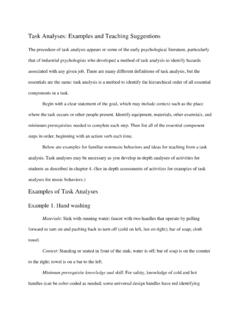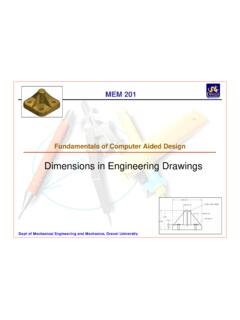Transcription of QR Decomposition with Gram-Schmidt - UCLA Mathematics
1 QR Decomposition with Gram-Schmidt Igor Yanovsky (Math 151B TA). The QR Decomposition (also called the QR factorization) of a matrix is a Decomposition of the matrix into an orthogonal matrix and a triangular matrix. A QR Decomposition of a real square matrix A is a Decomposition of A as A = QR, where Q is an orthogonal matrix ( QT Q = I) and R is an upper triangular matrix. If A is nonsingular, then this factorization is unique. There are several methods for actually computing the QR Decomposition . One of such method is the Gram-Schmidt process. 1 Gram-Schmidt process Consider the GramSchmidt procedure, with the vectors to be considered in the process as columns of the matrix A. That is, .. A = a1 a2 an .. Then, u1. u1 = a1 , e1 = , ||u1 ||. u2. u2 = a2 (a2 e1 )e1 , e2 = . ||u2 ||. uk+1. uk+1 = ak+1 (ak+1 e1 )e1 (ak+1 ek )ek , ek+1 = . ||uk+1 ||. Note that || || is the L2 norm. QR Factorization The resulting QR factorization is.
2 A1 e1 a2 e1 an e1.. 0 a2 e2 an e2 . A= a1 a2 an = . e1 e2 en .. = QR.. 0 0 an en Note that once we find e1 , .. , en , it is not hard to write the QR factorization. 1. 2 Example Consider the matrix . 1 1 0. A = 1 0 1 , 0 1 1. with the vectors a1 = (1, 1, 0)T , a2 = (1, 0, 1)T , a3 = (0, 1, 1)T . Note that all the vectors considered above and below are column vectors. From now on, I will drop T notation for simplicity, but we have to remember that all the vectors are column vectors. Performing the Gram-Schmidt procedure, we obtain: u1 = a1 = (1, 1, 0), . u1 1 1 1. e1 = = (1, 1, 0) = , , 0 , ||u1 || 2 2 2.. 1 1 1 1 1. u2 = a2 (a2 e1 )e1 = (1, 0, 1) , , 0 = , ,1 , 2 2 2 2 2.. u2 1 1 1 1 1 2. e2 = =p , , 1 = , , , ||u2 || 3/2 2 2 6 6 6. u3 = a3 (a3 e1 )e1 (a3 e2 )e2.. 1 1 1 1 1 1 2 1 1 1. = (0, 1, 1) , ,0 , , = , , , 2 2 2 6 6 6 6 3 3 3.. u3 1 1 1. e3 = = , , . ||u3 || 3 3 3. Thus, . 1 1 13.. 2 6.. Q = e1 e2 en = 1 16 1 , 2 3.
3 0 2 1. 6 3. 2 . 1 1. a1 e1 a2 e1 a3 e1 2 2 2. 3 1 . R = 0 a2 e2 a3 e2 = 0 6 6 . 0 0 a3 e3 0 0 23. 2.
